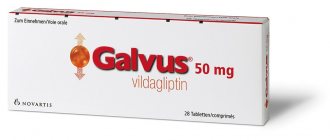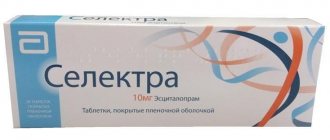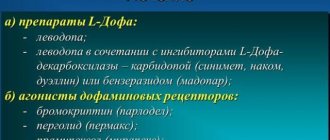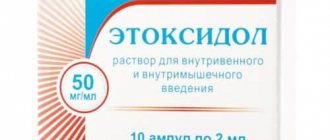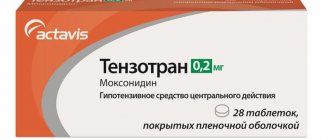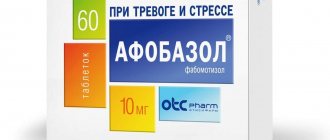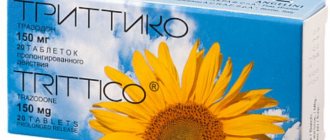Composition and release forms
The active ingredient of the drug is fluticasone propionate. It is practically not prone to absorption into the blood; after two days it will be excreted from the body unchanged through the gastrointestinal tract.
The medicine is produced in two forms:
- Cutivate ointment;
- Cutivate cream.
Both forms of release are packaged in aluminum tubes with a volume of 15 grams. 1 gram of ointment contains 50 mcg of active substance. The same volume of cream contains 500 mcg of active substance.
Side effects
Adverse reactions are classified according to organs and systems and frequency: very often (>1/10), often (>1/100, <1/10), infrequently (>1/1000, <1/100), rarely (>1 /10000, <1/1000), very rarely (<1/10000), including single episodes, unknown (frequency cannot be estimated from available data).
Infections and invasions.
Very rare: opportunistic infections.
On the side of the immune system.
Very rare: hypersensitivity.
On the side of the endocrine system.
Very rarely: suppression of the hypothalamic-pituitary-supraglosal system:
- increased body weight/obesity;
- suppression of increased body weight/suppression of growth in children;
- Cushing's signs (for example, monthly appearance, central obesity);
- change in the level of endogenous cortisol;
- hyperglycemia/glucosuria;
- arterial hypertension;
- osteoporosis;
- cataract;
- glaucoma.
On the side of the skin and under the skin fabric.
Often: sverbizh.
Uncommon: sensation of local liver in the skin.
Very rarely: thinning of the skin, atrophy of the skin, striae, telangiectasis, changes in pigmentation, hypertrichosis, allergic contact dermatitis, worsening of the main symptoms, pustular form of psoriasis, erythema, blistering, cropping Iv'yanka.
From the side of the organs
Invisible: impairment of vision clarity (div. section “Peculiarities of stagnation”).
Indications
The drug is intended for the treatment of dermatoses, eczema of various origins (including childhood) and psoriasis.
Good reviews of Cutivate in the treatment of such skin diseases:
- Lichen planus;
- Lupus erythematosus;
- Neurodermatosis;
- Lichen;
- Dermatitis;
- Seborrhea.
Cutivate and its analogues are also often prescribed for severe allergic reactions to exposure to poisonous plants and insect bites.
The drug can be used either independently or as part of a complex treatment of skin diseases.
If the disease has entered a chronic stage - this is especially true for eczema of various origins - the medicine can be used as a prophylactic agent.
Showing
Grown up.
Dermatoses sensitive to treatment with corticosteroids, such as:
- atopic dermatitis;
- numular dermatitis (discoid eczema);
- vuzluvaty sverbіzh;
- psoriasis (behind the cause of widespread plaque psoriasis);
- simplex chronic lichen (neurodermatitis), versicolor versicolor;
- seborrheic dermatitis;
- inflammatory or allergic contact dermatitis;
- discoid wolfdog;
- generalized erythroderma (as an additional disease);
- reaction to coma bites;
- Chervona pitnitsa.
Children.
Treatment of atopic dermatitis in children over 3 months of age, depending on the effect of treatment with less potent corticosteroids.
Contraindications
As stated in the instructions for use of Cutivate ointment, in case of increased individual sensitivity to the active substance, the medicine is not prescribed.
Grounds for refusal to use may be:
- Fungal skin diseases;
- Acne;
- Infectious or bacterial skin lesions;
- Chicken pox;
- Herpes;
- Skin damage, including wounds.
Do not use Cutivate hormonal ointment when treating the genital area and anus.
If there are combined inflammatory processes of infectious origin, the drug is used conditionally. After starting treatment, the doctor monitors the skin lesions and cancels his appointment if it worsens.
Pharmacological authorities
Pharmacodynamics.
Fluticasone propionate is a glucocorticoid drug with high anti-inflammatory activity and even a low level of suppression of the hypothalamic-pituitary-supragnosal system in case of local congestion, thus its therapeutic index It is one of the most widely used topical steroids currently available.
Fluticasone propionate has high systemic activity after acute ingestion, but very low activity after oral ingestion, possibly due to metabolic inactivation. In vitro follow-up
showed a high affinity for glucocorticoid receptors in humans.
Fluticasone propionate does not exhibit any immediate hormonal effects or direct effects on the central and peripheral nervous systems, scolio-intestinal, cardiac-vascular or vascular systems.
Pharmacokinetics.
Absorption.
When administered locally or orally, the bioavailability is quite low due to limited absorption of the drug through the skin or intestinal tract and due to intensive first-pass metabolism. Oral bioavailability approaches zero, so the systemic infusion of fluticasone propionate with any internal congealed cream will be low.
Rozpodil.
Studies have demonstrated that only a small amount of orally administered fluticasone propionate reaches the systemic circulation, as it is readily excreted in the stomach and excreted in the feces. Fluticasone propionate does not bind to any tissues and does not bind to melanin.
Metabolism.
Based on pharmacokinetic studies in animals, fluticasone propionate is rapidly eliminated and promotes extensive metabolic clearance. In humans, metabolic clearance is wide and, apparently, it is the same as in Sweden. The absorption of the drug through the skin into the systemic circulation is quickly inactivated. The main mechanism of metabolism is hydrolysis to carboxylic acid, which has very low glucocorticoid and anti-inflammatory activity.
Vivedennya.
These data are monitored on animals that are being bred and are not dependent on the method of administration of fluticasone propionate. Excreted, head first, from feces, and this process is completed within 48 years.
Use during pregnancy
For pregnant women, the drug can be used only in the most exceptional cases. It is strictly forbidden to use the medicine on your own during pregnancy.
Only if treatment is really necessary and the benefit for the woman is much greater than the possible harm to the child, doctors prescribe Cutivate.
It is recommended to stay in a hospital for medical supervision.
The use of Cutivate is also not recommended during breastfeeding, since it passes into breast milk in small doses. Only a doctor can consider such a risk justified and prescribe the drug.
Method of congestion and dosage
Children reach 3 months of age.
The cream is especially emollient for bathing hairy or wet skin surfaces.
Apply the drug with a thin ball to the skin area 1 or 2 times per dose. The duration of the treatment during cold stagnation should be increased to 4 days until the skin is reduced, then change the frequency of applying the cream or change to a treatment with a less forceful preparation. After applying the cream, allow enough time for the drug to be absorbed before applying the emolient.
Once control over the illness is achieved, the frequency of stagnation of topical corticosteroids should be gradually changed to a constant change and, as a supportive therapy, stagnation of emollients should be stopped.
Renewal of symptoms of a clear illness may occur with rapto-precipitated stagnation of topical corticosteroids, especially potent ones.
The difficulty of treating adults and summer age patients.
In times of deterioration, I will either have to reconsider the severity of the 2–4th degree of diagnosis and treatment.
Children are up to 3 months old.
Children are more likely to experience local or systemic side effects when taking topical corticosteroids, so they are prescribed short courses of treatment and less intense medications, less for adults.
Cutivate cream should be cured with care to ensure that the minimum effective strength of the drug is applied.
The thrill of treating children.
If the cream does not set on children for 7-14 days, the child should be washed and dressed. After 7–14 days of treatment, disease control is achieved by maintaining the minimum effective dose for the shortest possible time. The triviality of treatment in the case of squandered stagnation is not necessary to overextend 4 years.
Summer age patients.
Clinical follow-up data did not reveal any difference in treatment outcome between summer-aged patients and younger patients. Splinters in patients with summer age are likely to impair the function of the liver or liver, which can cause blockage of the drug in systemic absorption, following the stagnation of minimal effects active doses of the drug using the shortest treatment period to achieve the desired result.
Pechinkova/Nirkova deficiency.
In the case of systemic absorption (when stored on a large surface and for a period of three hours), the metabolism and elimination of the drug may be reduced and the risk of systemic toxicity may increase. Therefore, to achieve the desired result, it is necessary to maintain the minimum effective dose for the shortest possible time.
Children.
Leave for bathing children up to 3 months.
Mode of application
Both release forms are intended for external processing only. The ointment or cream should be applied to the skin pointwise, and the application site should not be covered with bandages. This may restrict air flow and increase the chance of the medication entering the bloodstream.
Avoid getting the ointment on the mucous membranes; to prevent this, wash your hands thoroughly with soap and water after each use.
The instructions for Cutivate ointment recommend using it 2 times a day on clean skin. If necessary, the skin must be pre-treated with an antiseptic.
The exception is atopic eczema: during the period of exacerbation of this disease, the ointment should be applied once every three days. Bandages are also prohibited.
The longest course of treatment can reach a month. A week after prescribing the medicine, there should be a noticeable improvement. If this does not happen, the doctor will change the dosage or the entire treatment regimen.
The maximum daily dose of the drug is 20 grams.
Cutivate's instructions prescribe the choice of dosage and the prescription of a treatment regimen to be left to the attending physician.
Side effects
In most cases, the drug does not cause side effects. But a small percentage of exceptions may include patients with a long (longer than a month) course of treatment.
Occasionally, suppression of the hormonal levels produced by the adrenal glands is observed. All these cases with the following conditions of use:
- In young children;
- Using dressings on top of the medication;
- For inflammation located in a skin fold.
Dilatation of the vascular surface may occur. As a consequence of this, psoriasis, pigmentation, and allergies occur.
Use Cutivate ointment and its analogues carefully on the face. The skin there is thinner and more sensitive, which increases the risk of side effects.
If it gets into the eyes, the drug can provoke the development of glaucoma if the eyes are not washed thoroughly and promptly.
Overdose
Symptoms
When administered locally, fluticasone propionate can be absorbed at a rate sufficient to cause a systemic effect. The danger of overdosing is even less severe. In cases of chronic overdose or illness, signs of hypercortisolism may occur (section “Adverse reactions”).
Likuvannya.
In case of overdose of the cream, step by step, change the frequency of application or replace it with a less potent topical corticosteroid, which may reduce the risk of development of glucocorticosteroid deficiency. Further treatment is carried out continuously until the patient’s clinical stage.
Overdose
The drug is used externally, its concentration is quite sufficient to provide a systemic effect. An overdose of the drug is very unlikely, but possible. If you use the medication incorrectly or constantly overdose, Cushing's syndrome may develop.
To avoid this, do not use a bandage on the affected area with ointment applied and be careful about the amount you use.
Reviews
Almost all reviews of Cutivate ointment say one thing: when used strictly according to medical prescription, this drug is effective.
Olga, 27 years old. On New Year’s Day, my little daughter ate tangerines to her heart’s content and “earned” herself a strong diathesis. For about 10 days I thought it would go away gradually on its own, but I had to take her to the doctor. The pediatrician prescribed ointment, the rashes greatly decreased on the first day, and after 3 days they completely disappeared. I’m very pleased, but I still don’t give tangerines to my daughter yet.
Elena, 21 years old. For as long as I can remember, I have always suffered from severe allergies. My mother treated me with folk remedies and took me to doctors throughout my childhood, but it helped very little. One day, the allergy not only worsened, but manifested itself in a small rash all over my hands. They burst at the slightest movement, bleeding. I ran to the dermatologist, he prescribed Cutivate. I didn’t believe that it would help, but I applied it and the very next morning I felt much better! My joy knew no bounds. I always started carrying the ointment in my bag and used it for about two years. But at one point the medicine stopped working completely. I was scared, but it turned out that this is how it should be: you can only apply the ointment for a month in a row or a little longer.
Evgeniy, 39 years old. Last summer, a scattering of red pimples appeared on my back. The doctor said that most likely it was an allergic reaction to something and prescribed Cutivate. It helped quickly, we smeared mosquito and midge bites with the remaining cream on ourselves and our child. We have a lot of them flying around, I hope that the tube is enough.
